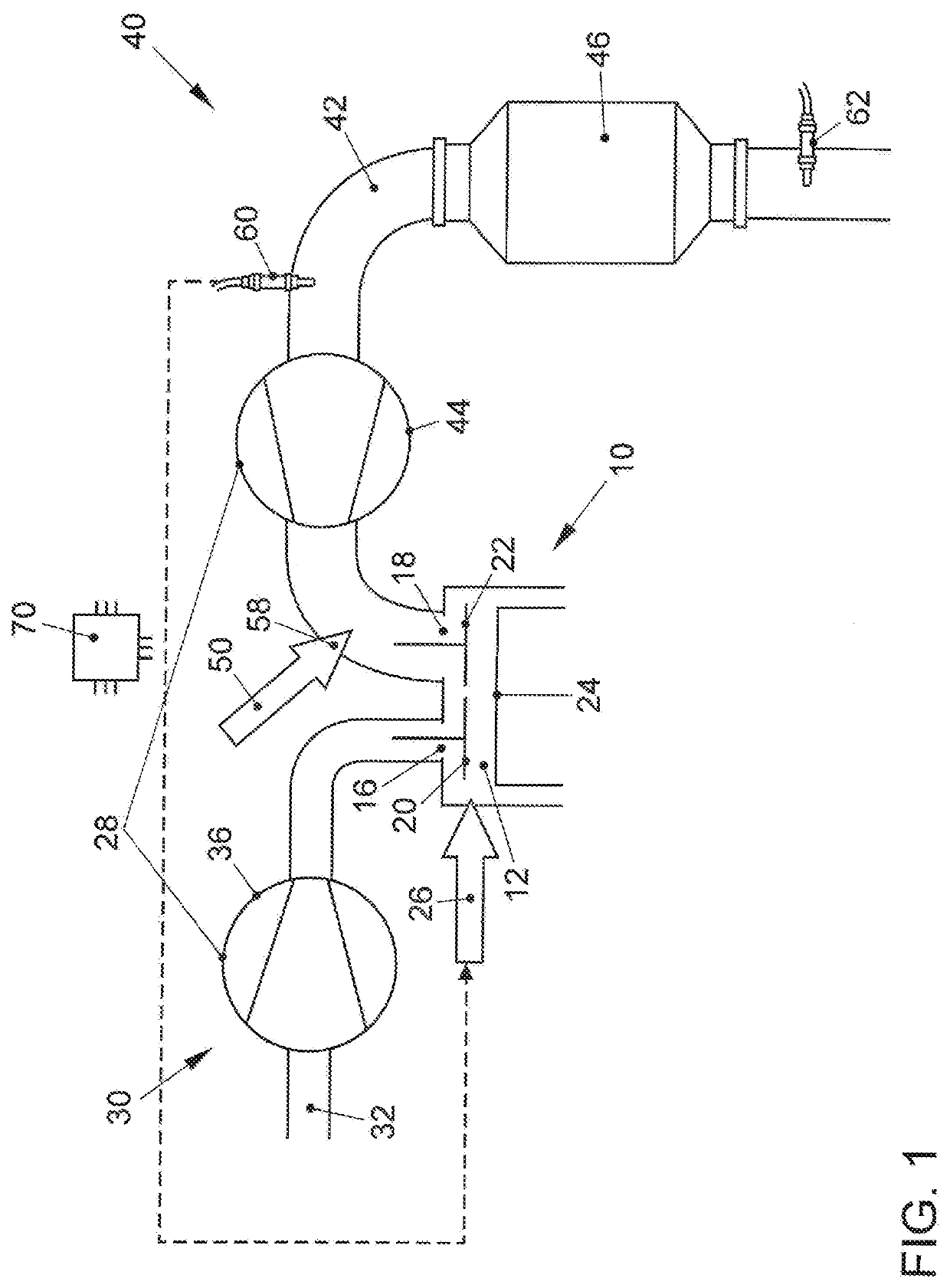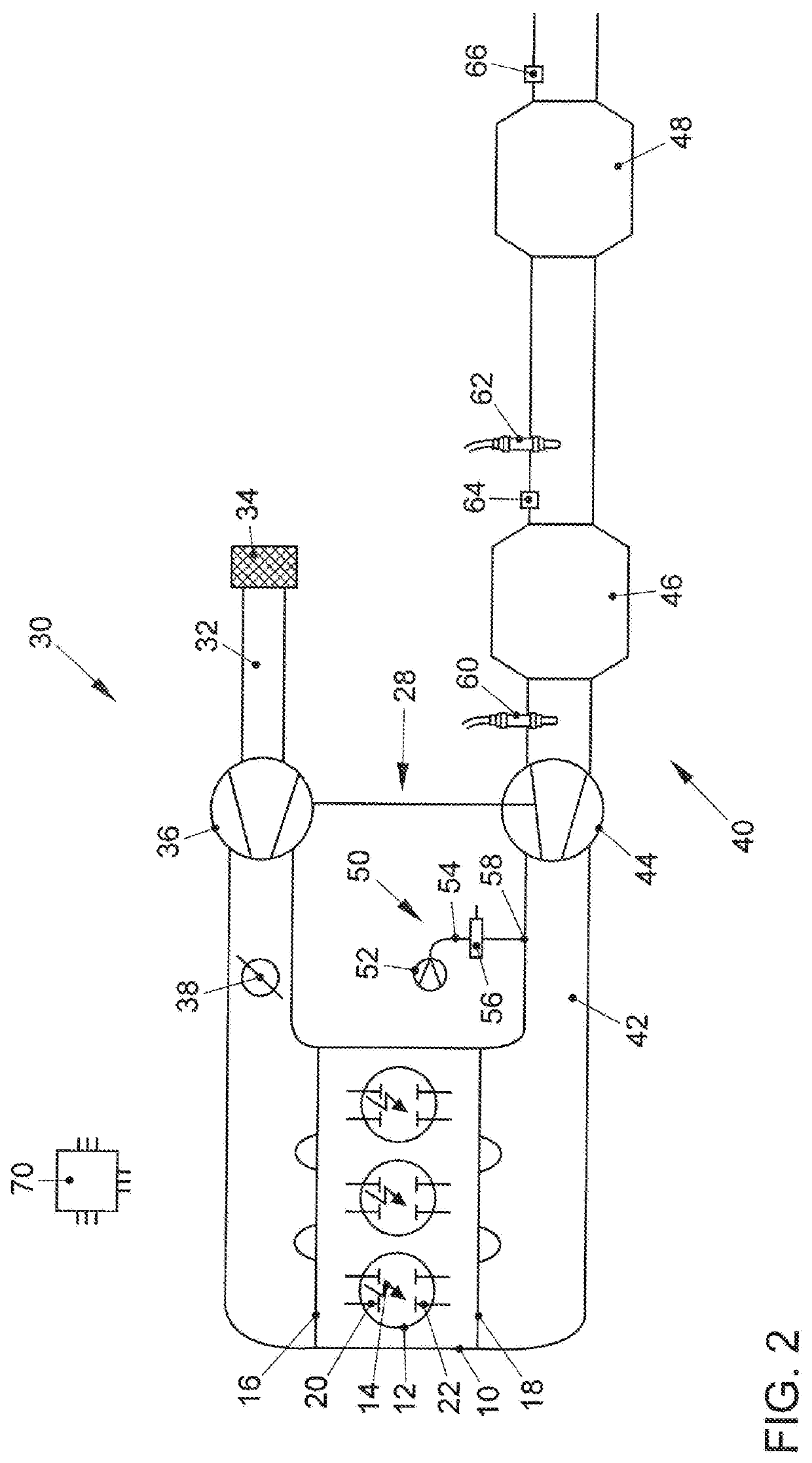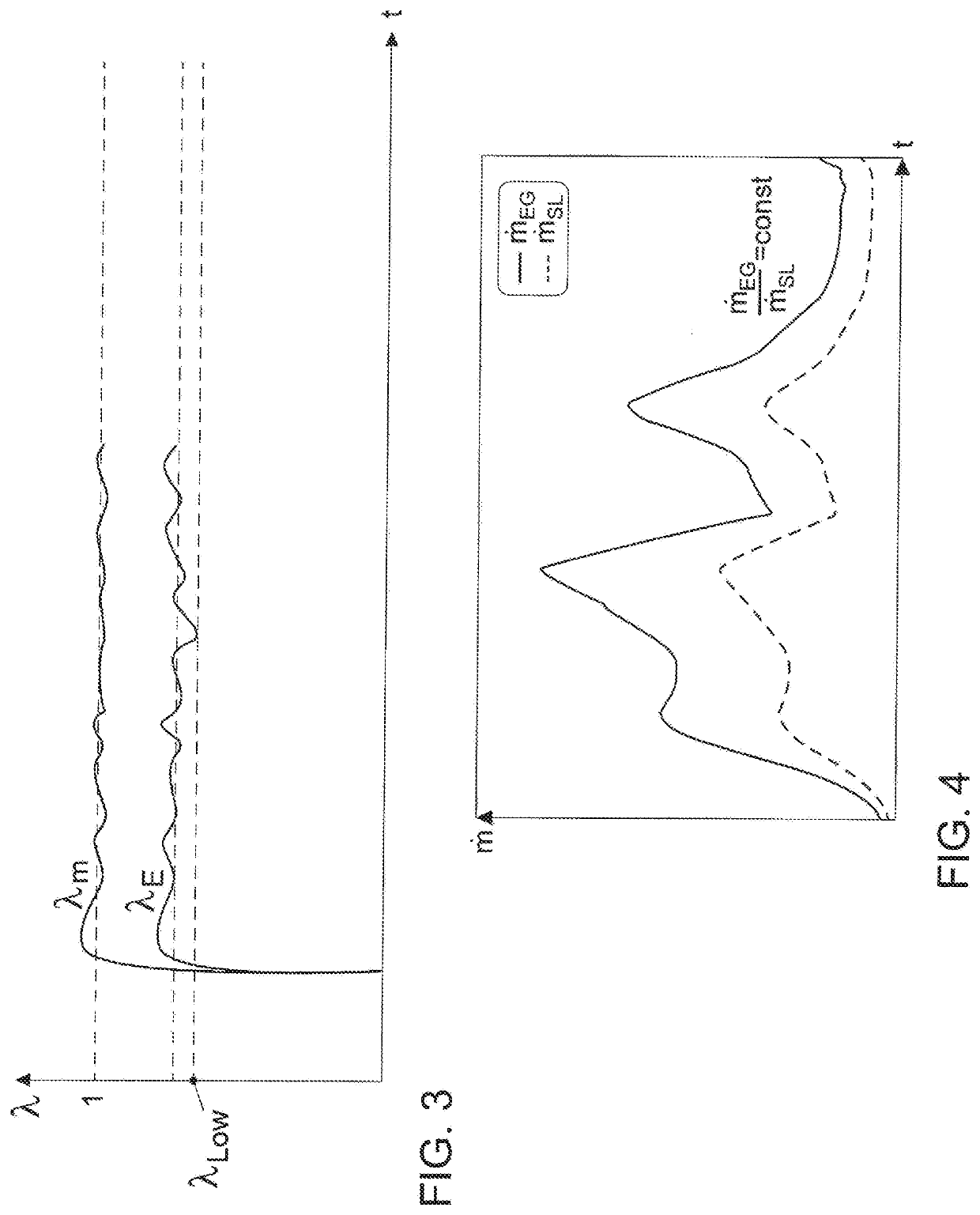Method and device for the exhaust aftertreatment of an internal combustion engine
an exhaust aftertreatment and internal combustion engine technology, applied in the direction of exhaust treatment electric control, electrical control, machines/engines, etc., can solve the problems of not being able to achieve emissions-optimized lambda regulation, no control system for constant secondary air quantity, targeted, etc., to achieve simple and accurate control of secondary air quantity, prevent uncontrolled outflow of exhaust gas, increase or reduce the amount of secondary air conveyed
- Summary
- Abstract
- Description
- Claims
- Application Information
AI Technical Summary
Benefits of technology
Problems solved by technology
Method used
Image
Examples
Embodiment Construction
[0037]FIG. 1 shows an internal combustion engine 10 with a combustion chamber 12 in which a piston 24 is displaceably arranged. Furthermore, a fuel injector 26 is provided at the combustion chamber 12 in order to inject fuel into the combustion chamber 12. The internal combustion engine 10 is connected at its intake 16 to an air intake system 30. The air intake system 30 comprises an intake line 32 in which a compressor 36 of an exhaust gas turbocharger 28 is arranged. In addition, the internal combustion engine 10 is connected with its outlet 18 to an exhaust system 40. The exhaust system 40 comprises an exhaust duct 42 in which, in the direction of flow of an exhaust gas of the internal combustion engine 10 through the exhaust duct 42, a turbine 44 of the exhaust gas turbocharger 28 is arranged, and, downstream from the turbine 44, at least one catalytic converter 46, preferably a three-way catalytic converter or a particulate filter with a three-way catalytically active coating, ...
PUM
 Login to View More
Login to View More Abstract
Description
Claims
Application Information
 Login to View More
Login to View More - R&D
- Intellectual Property
- Life Sciences
- Materials
- Tech Scout
- Unparalleled Data Quality
- Higher Quality Content
- 60% Fewer Hallucinations
Browse by: Latest US Patents, China's latest patents, Technical Efficacy Thesaurus, Application Domain, Technology Topic, Popular Technical Reports.
© 2025 PatSnap. All rights reserved.Legal|Privacy policy|Modern Slavery Act Transparency Statement|Sitemap|About US| Contact US: help@patsnap.com



